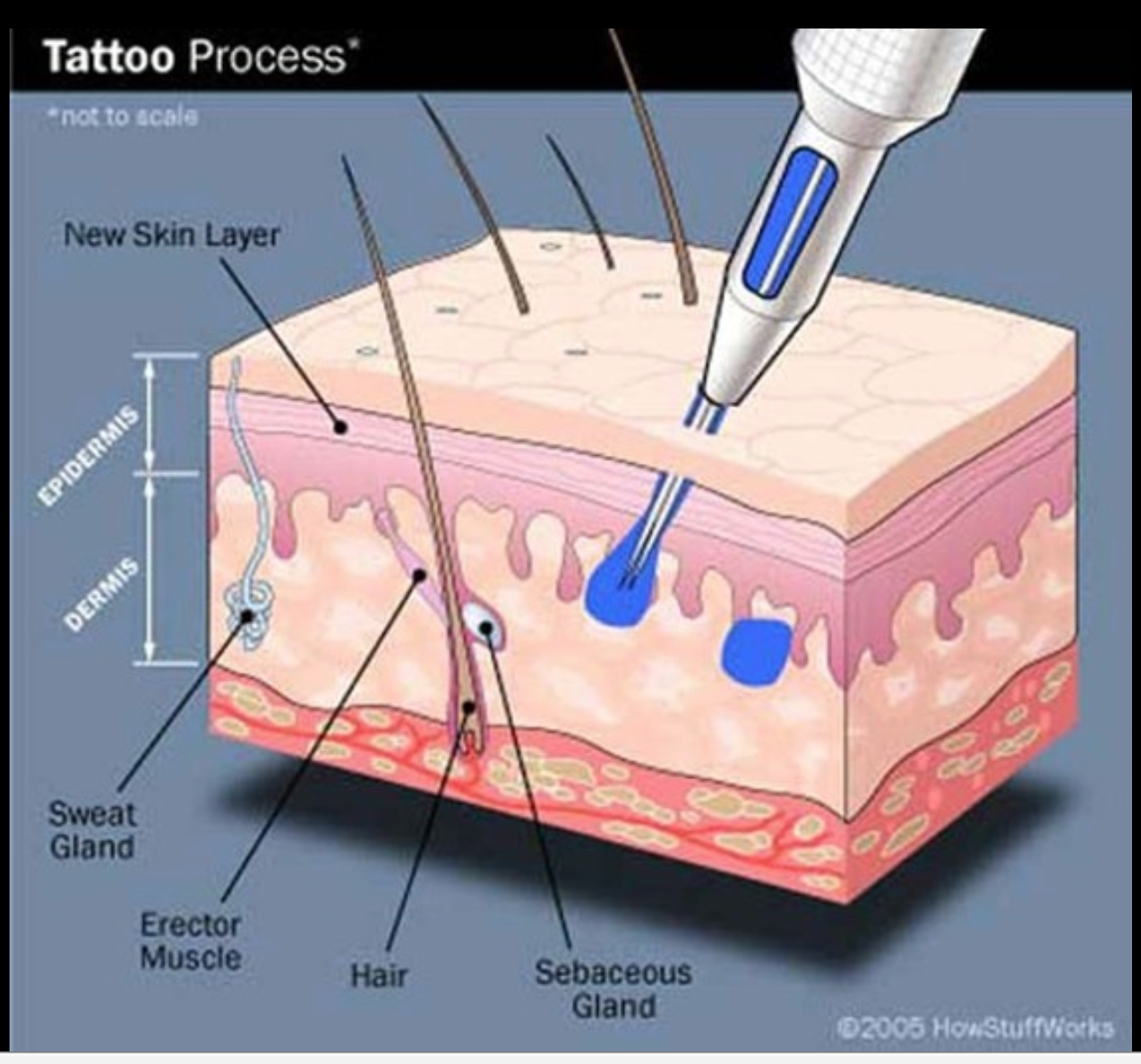“Laser-based body art removal systems were designed before modern particle-based pigments were widespread”
Ron Hendon, Inventor
Laser removal systems were originally developed around water-based ink pigments.
a modern tattoo artist applies ink pigment
WATER-BASED PIGMENTS
Water-based inks have few bold vibrant colours, such as modern titanium oxide-based blues and greens. To achieve the desired visual effects, body artists often pushed pigments deep into the epidermial layers.
ink was often pushed all the way into the dermis
Fig 1. skin layers
Water-based pigments are quite easily absorbed into the body, which sometimes leads to a loss of colour-brilliance and potentially pressurises the immune system.
However, the laser process makes use of this high rate of absorption.
It does so by exploding the cells which hold the ink pigments. This releases ink pigments deeper into the body and relies on the lymph, the lymphatic channels and the endocrinic organs to dispose of them.
The laser explosion process obviously causes significant pain.
Typical particle-based inks
come in many vibrant colours
particle-based pigments
Most modern pigments are not water-based. Over time there has been an industry-wide movement towards particle-based pigments (powder) which can be placed in the upper epidermial layers, closer to the outer layer of skin.
Particle-based pigments are easier to apply and less likely to cause scarring. In the hands of a good body artist, they can have an outstanding visual effect.
They are more resistant to being absorbed, so the colours stay brilliant for far longer.
IMPACT on laser removal systems
Laser is simply less effective on particle-based tattoos.
The cells containing particle-based ink pigments often need to be exploded over and over again, leading at times to a treatment regimen approaching 12 or more sessions. This can make laser treatment an expensive undertaking.
Fig 2. Lasers explode pigment-containing cells releasing ink pigments to the lymphatic system
The pain resulting from lasers has also led to the development of more gentle systems which then result in more sessions being required.
Unwanted scars left by over-zealous laser practitioners have also led to reputational damage.
Ron Hendon patented 123TattooFree® and designed the dermal lift process to avoid the dangers of laser and to work both with water-based and particle-based pigments.
THe DERMAL lift advantage
ink pigments are drawn outward, not pushed inward
the body’s self-healing processes are activated
the system works on darker skin tones, whereas laser can cause hyper-pigmentation
dermal lift works on tattoos which contain vibrant colour, such as blue and green associated with titanium oxide. Laser systems can cause discolouration where oxides are present.
the pinpoint abrasion used in dermal lift is less painful than the original tattoo application and consequently significantly less painful than laser treatment
a maximum of three treatment sessions are needed to remove the tattoo completely. That is correct! A maximum of THREE sessions is required. That means it costs less to remove an unwanted tattoo and takes less time from start to finish
Dermal lift works very well
on darker skin tones too
Become a Partner
Email us at if you would like to partner with us or receive training in dermal lift






